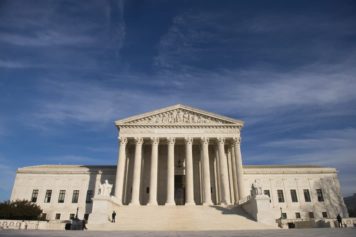In the aftermath of the dramatic 2017 Virginia legislative elections, many are left trying to make sense of what happened. There were five delegate races that came within the one percent cutoff to qualify for a recount, with two having vote margins of less than 100 votes. This in a state where the Republicans have controlled the House of Delegates (Virginia’s Hosue of Representatives) since 2001.
The most troubling concern about the election, however, was that despite the Democratic win in the statewide delegate race, 53.1 percent to 43.76 percent, Democrats are still unlikely to take control of the House of Delegates, thanks to a highly gerrymandered electoral map. Increasingly, the strategy by Republicans to counter the national demographic trend toward a less white, less conservative America is creating scenarios where the political result is different from the expressed view of the voter.
“The big picture implication, and in fact the result, is that Republicans have significantly more power in government than you’d expect based on how many votes they get,” Sean Diller, owner of the election consultancy Diesel Campaigns, told Atlanta Black Star. “For example even though 46 percent of Georgians voted for Hillary Clinton in 2016, the state is represented in Congress by 10 Republicans and only 4 Democrats.”
Facing both active and passive voting disenfranchisement schemes, the population most susceptible to this loss of the vote through gerrymandering is African-Americans. While the 46 representatives, two territorial delegates, and three senators of the 115th Congress represents the largest Black congressional caucus ever, most of the representatives came from highly gerrymandered “safe districts,” which only gives a symbolic representation to Black people in their states. States in the South with large Black populations have carved out these districts to meet the federal requirements, but they also preserve an over-represented majority white and right-wing control.
The Trap at the Ballot Box
President Barack Obama has been busy since leaving office. Alongside former Attorney General Eric Holder, Obama has begun to challenge the Republican stranglehold on the U.S. House of Representatives. Obama’s target is a little-known Republican strategy called REDMAP, or the Redistricting Majority Project.
In 2008, Democrats held nearly 60 percent of all the states’ legislative seats. After the Republican victories in midterm elections, they launched a coordinated effort to keep those seats secure. Since the states draw the congressional district maps and electoral maps typically are changed following the census. The outcome of the new maps helped Republicans gain and hold almost 70 percent of the statehouses’ seats, despite the ongoing decline of the base Republican constituency, the national white population.
In Virginia, the reality of this was clear on Election Day. Democratic gubernatorial candidate Ralph Northam beat Republican challenger Ed Gillespie by nine percentage points — roughly the margin in the delegate races. Despite this, and with all of the delegate seats at play this electoral cycle, the Republicans are slated to retain the House of Delegates, 51-49. For the Democrats to stand any chance of being on an equal ground with Republicans again, Democrats must retake the statehouses by 2020 in order to change the gerrymandered maps.
“Their professional lives are going to be a little less certain,” Eric Holder said about “safe seat” representatives during his November 7 speech to the Campaign for Fair Sentencing of Youth. “But Democrats can’t go through another decade like the decade we are in now. In another decade, Republicans could solidify this in such a way that, well, you’d be talking about such structural changes that I’m not sure we could overcome even when you get to 2031.”
Dissecting the Trap
To understand how state redistricting affects African-Americans, one must take a look at the history of Black migration. The First Great Migration, which happened between 1916 and 1930, first saw African-Americans leave the rural South for Northern industrial hubs. The 1.6 million African-Americans who moved to cities like New York, Pittsburgh, Philadelphia, Chicago, and Cleveland represented the first true influx of Black people to urban enclaves. This was supplemented by the Second Great Migration (1940-1970), which saw five million more African-Americans head north and west.
This had a noticeable effect on the cities. New Black immigrants to the North faced steep institutional and governmental racism and were largely quarantined in “redlined” neighborhoods in the less-desirable parts of the cities. White city dwellers who did not want to live next to these new Black residents fled to the newly-formed and largely-segregated suburbs in a migration of their own that is now known as “white flight.” The resulting Black-majority “redlined” districts, such as New York’s 12th and 18th districts – became the historical seats of Black representation in this nation.
The decline of the nation’s industrial base, however, made staying in the North unpalatable for many African-Americans. This triggered a Third Great Migration or an out-migration (1970-present), where many Black people are returning to the South to find employment and better living conditions. At the same time, the new generation of white suburbanites are moving back to the cities they once abandoned.
This is creating a set of unique phenomena. First, with African-Americans leaving northern cities, what was once a solid voting bloc is now dispersing. Second, the return of African-Americans to the South is adding stress to a political situation that radically changed since the end of the Second Great Migration. Since then, the South has flipped from solidly Democrat to solidly Republican as whites switched party affiliations during the civil rights movement because many felt Democrats were becoming the party most open to securing Black rights. The out-migration back to the South by Blacks is part of a changing demographic outlook in the south.
Finally, the declining birth rates of whites compared to other ethnicities is creating a situation where white majority rule is being negated at the local level. The U.S. Census Bureau projects non-Hispanic whites will become less than 50 percent of the U.S. population by 2044. This realization has led many to feel that, on a level playing field, Republicans will increasingly be beaten back to being a regional party.
This has led to a host of different methodologies to “cheat the vote.” From mandatory voting ID to reducing the number of voting stations, the Republicans have unleashed the largest suite of voting discrimination measures against Black voters since Jim Crow. The most effective of these is racial gerrymandering. Using REDMAP and the Voting Rights Act’s requirement of safeguarding minority-majority districts, has created super-saturated Black “safe districts” that effectively dilute the Black vote in neighboring districts, often at the convenience of the politicians representing those districts. Using oddly-shaped districts REDMAP has allowed the Black voice to become tokenized at the discretion of the Republicans. This is reflected in the fact that almost all of the South’s Democratic representatives are Black.
The Continuing Fight
While the Democrats have identified the challenge at hand, the Republicans have already taken steps to ensure their electoral advantage for another decade. The Trump Administration, for starters, has announced that Thomas Brunell, a professor at the University of Texas at Dallas, will head the Decennial Census effort as deputy director of the U.S. Census Bureau.
A noted Republican scholar, Brunell wrote the 2008 book “Redistricting and Representation: Why Competitive Elections are Bad for America.” In the book, Brunell challenged the notion of competitive districts and argued for aggressive gerrymandering that would produce a majority of “politically homogeneous” districts.
The Trump administration is also entertaining challenges to Obama-era rule changes to how the Census collects race and ethnicity information – which effectively redefined Latinx and helped to shrink the official white population. This, combined with the Republican State Leadership Committee’s announcement that they are seeking $125 million for REDMAP 2020. This makes what Obama and Holder are trying to do that much more of a long shot. While the unpopularity of Trump will help, gerrymandering will continue to keep his constituency over-represented in the governing process.


